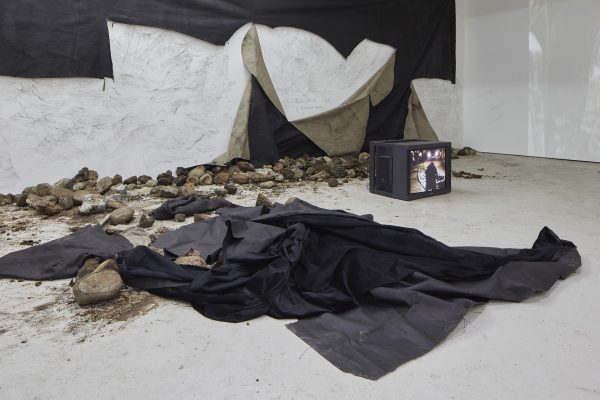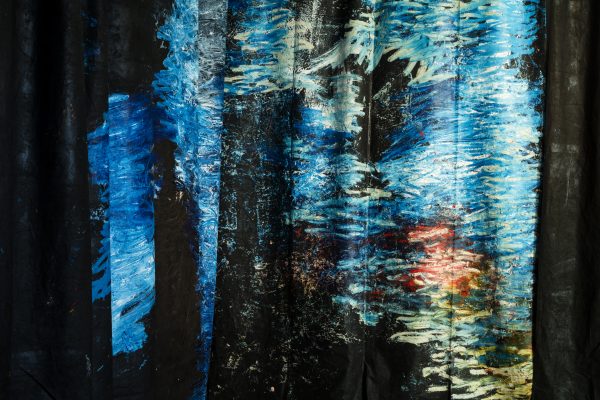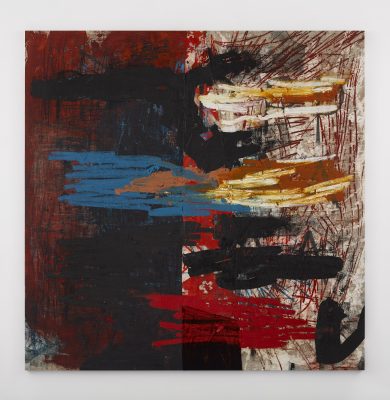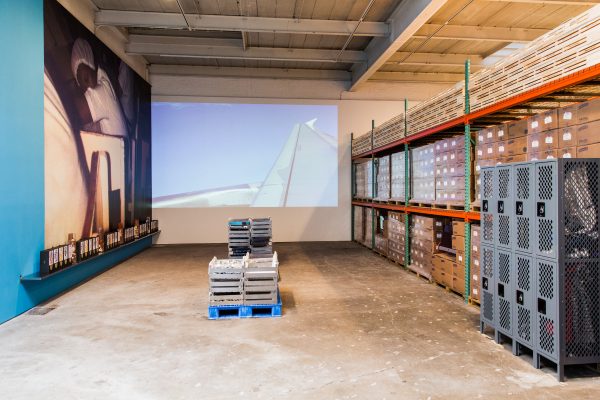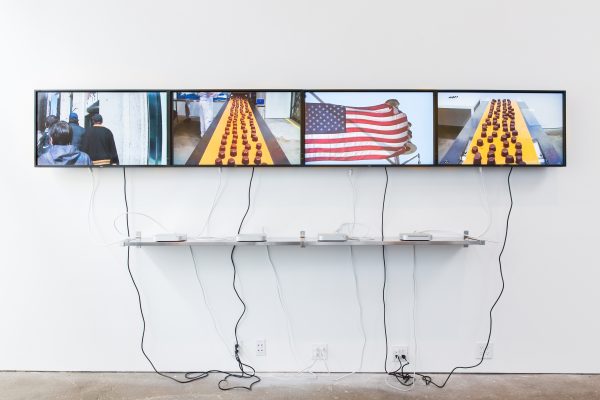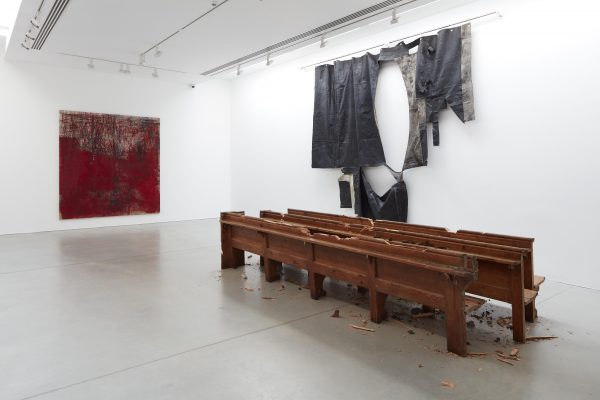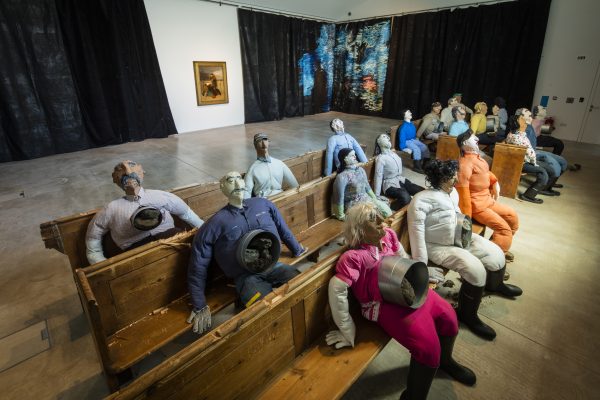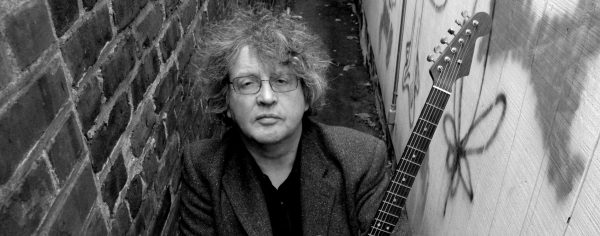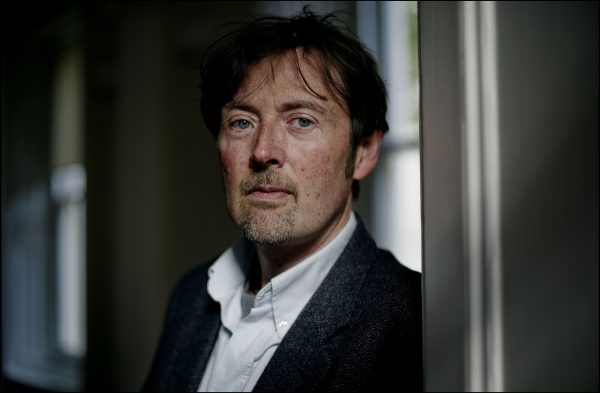For some years now, Oscar Murillo has been making work in aeroplanes. Out of necessity as much as desire, the Colombia-born artist now calls many places home. He has recently shown in New York, Shanghai, Cambridge, Baku, Venice, Ramallah, Gwangju, and Sydney – a non-exhaustive list. The critic Viktor Wang has dubbed Murillo’s ‘expanded practice’, which utilises these ad-hoc studio spaces, ‘flight mode’.
How to describe Murillo’s work in 2020? He is so prolific that I saw three discrete, overlapping shows of his works within a single summer. The artist, who exploded into the art world in 2013, is in a fecund phase. Though Murillo was initially synonymous with loud and expressionistic oil pantings, his work today spans mediums — video, drawing, installation, sculpture — and is united more by its themes than by any unified aesthetic.
I first met Murillo at the top of David Zwirner gallery in London on a Monday morning in June 2019. He had just started installing his show, Manifestation (2019), that would open that Friday evening. He refused coffee, professing that he was pumped on the adrenaline. We sat on couches in front of a Luc Tuymans painting – Three Percent (2017), a ghostly bluish close-up of a face in profile – that he would reference several times. Later, as we walked out, he gave brisk instructions to the crew who were installing his paintings and constructing a pavilion for an opening night performance. In the fall, we spoke again — I in New York, he in Colorado — a week before he became one of the joint winners of the 2019 Turner Prize. We spoke one last time in April during the COVID-19 pandemic, while we were both hunkered down for the foreseeable future in New York and Colombia, and revisited some of the newly unstable assumptions of our previous interviews and of the art world at large.
Murillo is thirty-four, still young for practically a household name. He graduated from the Royal College of Art with an MA in 2012 at age twenty-six, and his paintings commanded six figures by 2013, the same year he was part of a major group show at the Museum of Modern Art (MoMA) in New York. These works used vivid oil paints on sprawling, unfinished, patchworked canvases, and some were scrawled with wry buzzwords like ‘yoga’, ‘chorizo’ and ‘coconut water’. But being something of a trickster, he followed up his buzzy painting debut with the exhibition A Mercantile Novel (2014), turning New York’s David Zwirner gallery into a working chocolate factory, staffed by Colombian friends from home. (Murillo’s hometown of La Paila is the site of the massive Colombina chocolate factory, which has employed four generations of his family.) Pointedly, nothing was for sale.
He also has a flair for the dramatic gesture. For a residency later that same year at the Rio de Janeiro mansion of collector Frances Reynolds, he went undercover as a member of the cleaning staff right up until the closing gala, when he raged against Reynolds and his rich friends in a polemical speech. When he painted, as he did for the 2015 show The Forever Now: Contemporary Painting in an Atemporal World at the MoMA, he casually tossed his canvases on the floor. En route to Australia for the Sydney Biennale in 2016 he flushed his British passport down an airplane toilet, because he wanted to ‘reboot’ his life journey, the way his father had when he emigrated to London. (He was detained on arrival, deported to Singapore, and went back to Colombia for a while.)
Murillo’s lifelong preoccupations — migration, trade, capital, family, settlement — mean that his work veritably vibrates with globalisation-anxiety. But by the last time we spoke, the pandemic had disrupted both the notion of a ‘frequent flyer’ and the hyperglobalised art world in general. Assembled when hardly anyone was in ‘flight mode’, this conversation can be considered, as Murillo describes his own shows, as a ‘frozen moment’.
